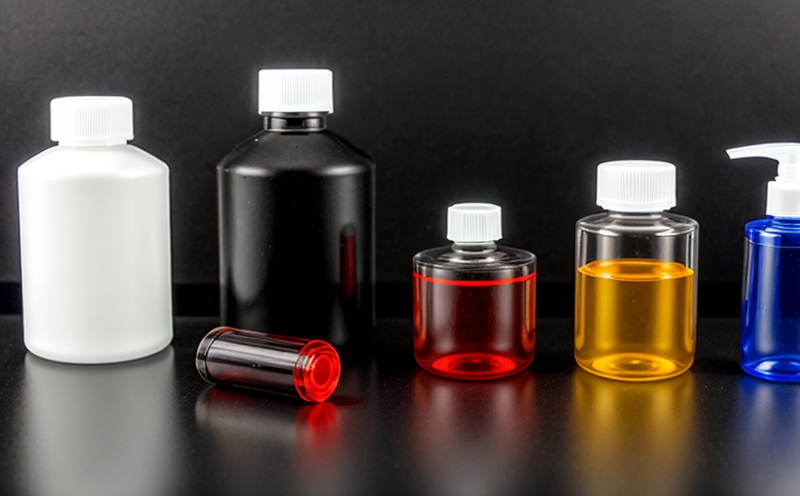ASTM D4329 UV Aging Resistance of Polymers with Nano Additives
The testing standard ASTM D4329 is a critical tool in evaluating the resistance of polymers containing nano additives to ultraviolet (UV) radiation. This test assesses the durability and performance of polymer materials, particularly those used in outdoor applications exposed to sunlight.
UV aging tests are essential for ensuring that plastics and other polymers maintain their mechanical properties under real-world conditions. By simulating exposure to UV light, this method helps predict how a material will withstand degradation over time. This is especially important when nano additives—such as carbon nanotubes or metal nanoparticles—are incorporated into the polymer matrix.
The process involves exposing test specimens to controlled UV radiation for extended periods. The specimens are then evaluated based on their physical and chemical properties before and after exposure. Key parameters include color change, loss of tensile strength, flexibility, and other mechanical attributes that could be affected by UV exposure.
Understanding the behavior of nano additives in polymers under UV conditions is crucial for industries ranging from automotive to construction. For instance, in automobile manufacturing, where plastics are used extensively, ensuring durability against environmental factors like sunlight can significantly enhance product longevity. In the construction sector, materials exposed to intense sunlight must retain their integrity and performance over prolonged periods.
The ASTM D4329 test is particularly relevant for applications involving outdoor furniture, roofing membranes, and exterior building components. The incorporation of nano additives aims at enhancing these materials' UV resistance, thereby extending their life cycle and reducing maintenance costs. This not only benefits manufacturers but also contributes to sustainable practices by promoting the use of longer-lasting products.
Accurate testing using ASTM D4329 is vital for ensuring compliance with international standards such as ISO 18850 and EN 927-6, which provide guidelines on UV radiation resistance. The test results are valuable not only for product development but also for regulatory compliance and market competitiveness.
In summary, the ASTM D4329 test is a cornerstone in assessing the UV aging resistance of polymers containing nano additives. It provides insights into how these materials perform under real-world conditions, ensuring that they meet or exceed industry expectations regarding durability and reliability.
Applied Standards
The ASTM D4329 test is aligned with several international standards aimed at evaluating the UV resistance of polymers. Key among them are:
- ASTM D4329: Standard Practice for Operating Outdoor Exposure Test Apparatus Using Solar Simulating Light Sources—This standard provides guidelines on how to conduct outdoor exposure tests using solar simulators.
- ISO 18850: Plastics—Determination of Ultraviolet Radiation Resistance of Films, Sheets and Plates—This ISO standard offers a method for testing the UV resistance of films, sheets, and plates used in various industries.
- EN 927-6: Plastics—Determination of Ultraviolet Radiation Resistance of Articles and Materials Used Outdoors—This European standard specifies the methods for determining the UV resistance of articles and materials intended for outdoor use.
The ASTM D4329 test is particularly useful when nano additives are involved, as it helps in understanding how these materials behave under UV exposure. The inclusion of such additives aims at improving the durability and performance of polymers, making them suitable for demanding applications.
Eurolab Advantages
At Eurolab, we pride ourselves on offering comprehensive testing services that meet stringent standards and ensure reliable results. Our expertise in ASTM D4329 UV aging resistance testing of polymers with nano additives is complemented by advanced instrumentation and experienced professionals.
We use state-of-the-art equipment to replicate real-world conditions accurately, ensuring the most precise test results possible. Our team of experts is well-versed in handling complex specimens and interpreting data to provide actionable insights for our clients.
The advantages of choosing Eurolab include:
- Accurate and Reliable Results: Leveraging cutting-edge technology ensures that every test conducted meets the highest quality standards.
- Comprehensive Reporting: Our reports are detailed, providing not only numerical data but also in-depth analysis to help you make informed decisions.
- Industry Expertise: Our team comprises professionals with deep knowledge and experience in polymer testing, particularly focusing on nano additives and UV resistance.
- Compliance Assurance: Ensuring that your products meet international standards such as ASTM D4329, ISO 18850, and EN 927-6 is a key aspect of our service.
- Efficient Turnaround Times: We understand the importance of timely results in product development and quality assurance processes. Our streamlined workflows ensure that you receive your reports quickly without compromising on accuracy.
- Sustainable Practices: By providing robust testing, we contribute to the development of longer-lasting products, which ultimately leads to reduced environmental impact.
Partnering with Eurolab means gaining access to world-class facilities and a team dedicated to excellence in every service they offer. Our commitment to quality ensures that your materials perform optimally under UV exposure conditions.
Environmental and Sustainability Contributions
- Promoting Durability: By enhancing the UV resistance of polymers, we contribute to the longevity of products used in outdoor environments. This reduces waste generation as materials last longer before needing replacement.
- Reducing Resource Consumption: Longer-lasting products mean less frequent replacements, leading to lower resource consumption and energy use associated with manufacturing new items.
- Promoting Recycling: Enhanced durability encourages recycling practices by ensuring that materials remain in good condition even after multiple uses.
- Decreasing Emissions: By promoting the use of durable products, we help reduce emissions associated with frequent production and disposal cycles.
- Innovation in Green Technologies: The integration of nano additives into polymers represents a significant step towards developing eco-friendly materials that are more sustainable over their lifecycle.
At Eurolab, our commitment to environmental stewardship is evident in every service we provide. By offering accurate and reliable testing for UV aging resistance with nano additives, we support the development of greener technologies and contribute positively to sustainability efforts.





